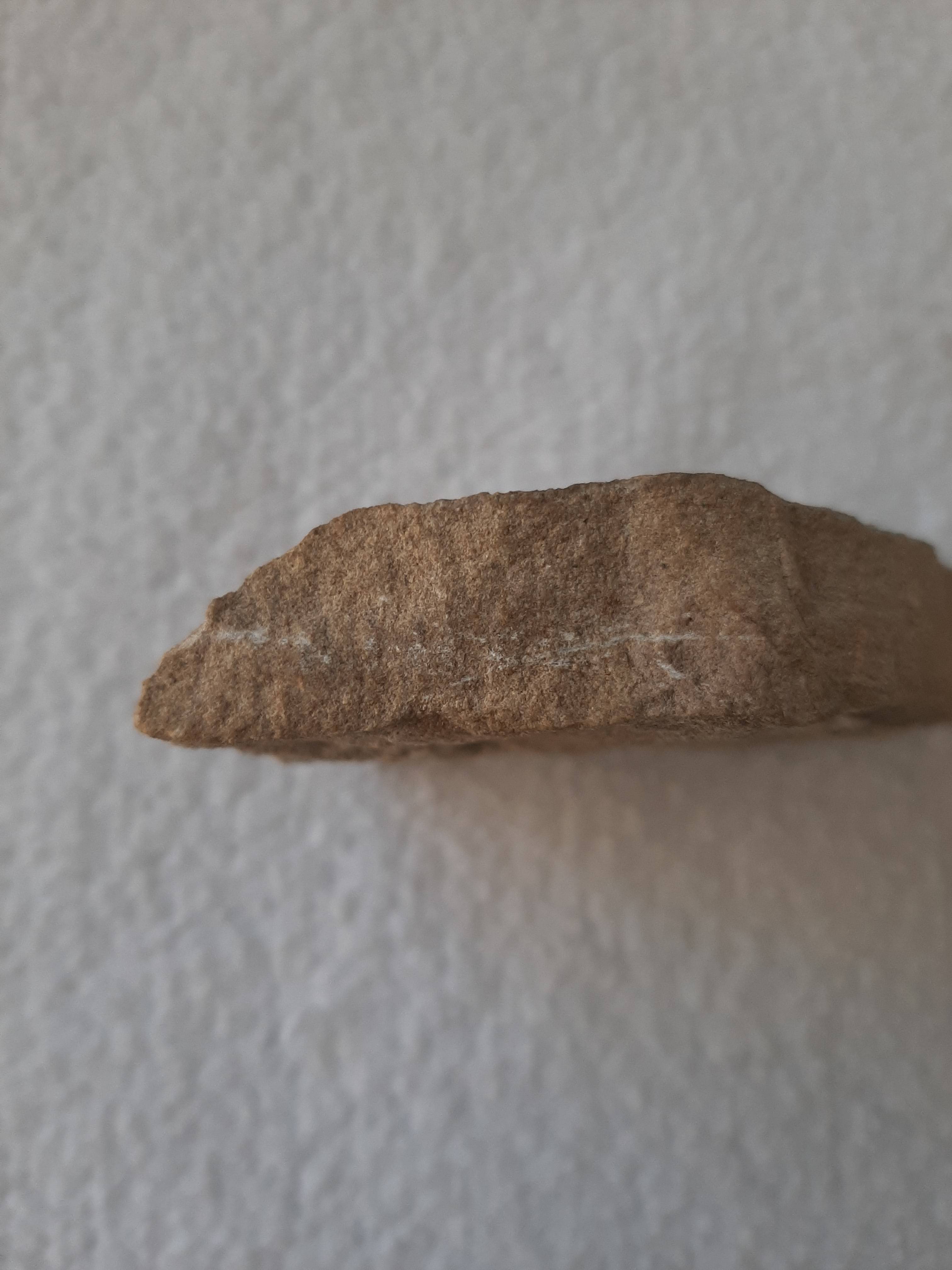I weekly walk along a mountain called San Cristobal near my town, Pamplona, at Spain. I frequently wonder what kind of rocks form the mountain, so I took a little piece fallen on the road at an outcrop placed at this coordinates. The zone is covered by Google, so you can take a look at the outcrop and its surroundings at Google Street View.
Here is the little piece I took (the rule measures centimeters):
There are similar rocks at the surroundings and the rock doesn't look to have any ore or be a valuable piece, so I cutted it with a hammer, to observe a fresh surface with a magnifying glass. It looks formed by non translucent brown grains.
This is the best picture I could take from the fresh-cut face. I wet the rock before doing the picture. The white line is the scratch of a coin. You can click on the image to observe the texture with zoom.
Its properties are:
- Its color is orange brown.
- It has a dull luster.
- It does not leave any streak at a paper. I tested it at the fresh surface.
- I scratched it with a coin, but not with my fingernail, so its hardness is between 2,5 and 3. I tested it at the fresh surface.
- I did the displacement test and its approximate volume is $40ml$. It weigths $104g$, so its density rounds $2,6g/cm^3$.


